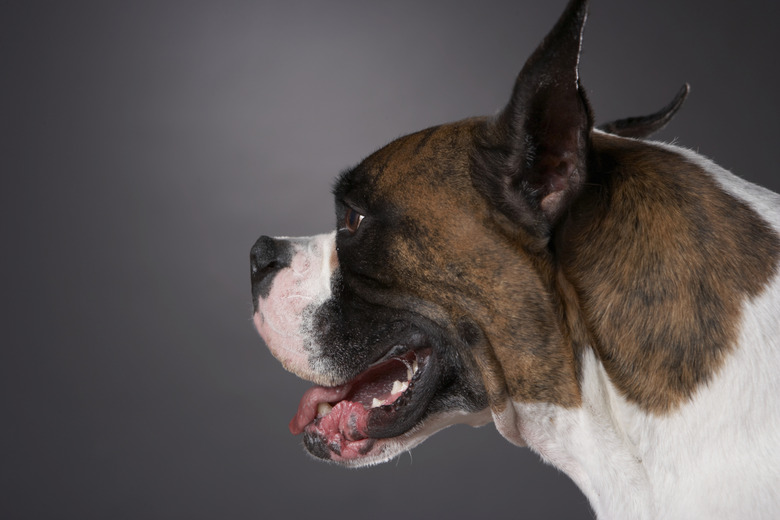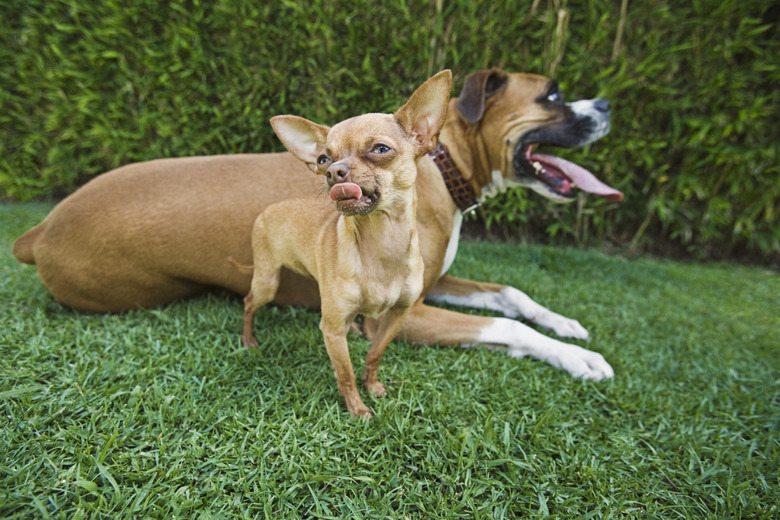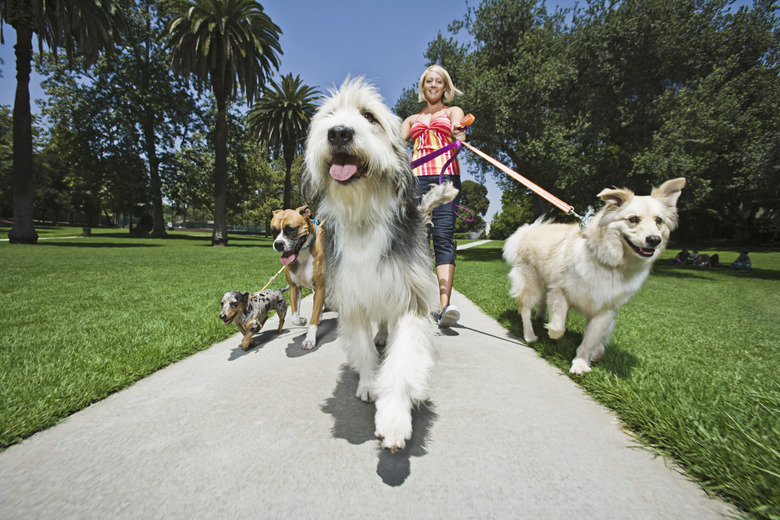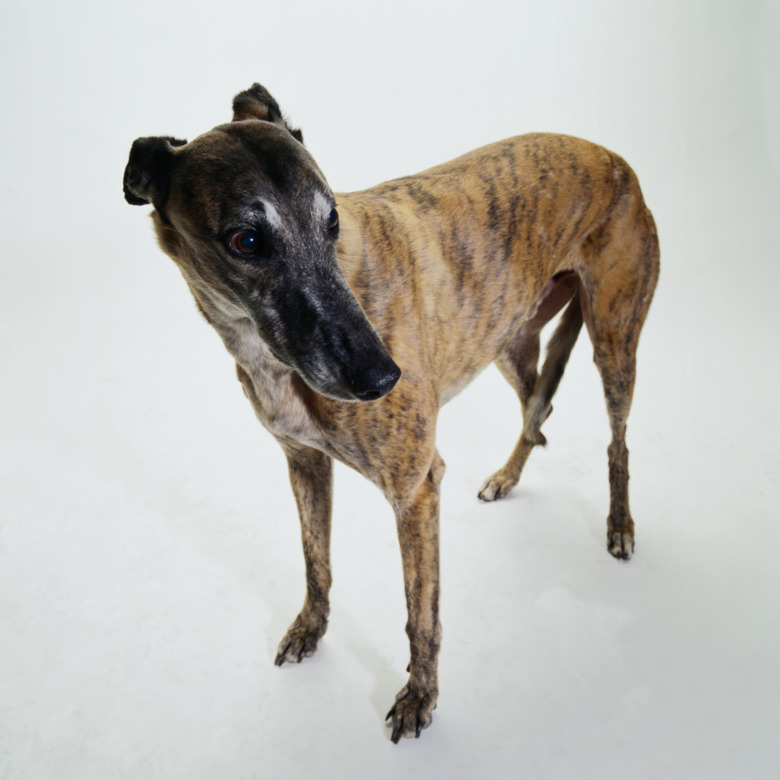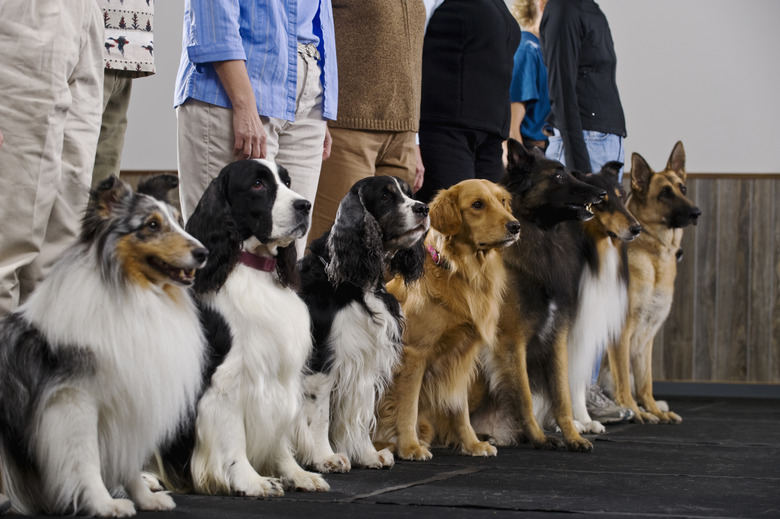How To Determine Dog Breed By Brindle Coloring
Are you looking to figure out what breed your new furry friend is? You might be pretty sure, but just need to know the difference between boxers and pit bulls, or your only clue might be the color of your dog's coat.
Tip
Mixed breeds are difficult to definitively identify. Sometimes the color is the only trait of a breed that is evident; the dog might look like a purebred but be a color not found in the breed.
Dogs that are bred carelessly might look more like another breed or a mixed breed.
Many dogs have a unique coloring called a brindle, which appears as either brown or a dusky tawny color with streaks of other colors mixed in. Brindle dogs have black stripes running across their body in the same direction as the ribs. Technically brindle is a marking pattern, but for ease of use most people refer to it as a color. Many breeds display a brindle coat, so determining the breed of a brindle dog depends on other factors.
Warning
DNA tests that purport to identify dog breeds are not able to detect all breeds and are not considered 100 percent reliable.
If you have a dog with a brindle coat and are looking to learn what breed your new pup is, great! You're already starting with a great clue.
Step 1
Look up a comprehensive list of dog breeds with brindle coats. Its Dog Breeds has an extensive list on their website with many pictures and helpful details so you can narrow down the possible breeds for your pet. American Kennel Club also features thousands of possible dog breeds with brindle coats.
Step 2
Check your dog's size. Is it a small, medium or large breed? Brindle dogs come in all sizes and this will help you narrow your choices by eliminating breeds that are a different size.
Step 3
Once you know your dog's size, look at the coat and determine whether it is a short-haired or long-haired breed.
Step 4
Evaluate the head structure. Some brindle breeds such as the boxer, have distinctive heads. Note whether the ears are floppy or upright and the length of the tail.
Step 5
Compare the above factors to the AKC standards to narrow down your list of possible breeds. Most standards are laid out so that there are specific sections on size, coat, head and body, so you can quickly review the relevant traits.
Step 6
Visit the website of the parent club for each breed standard and view the photos of the breed. If they don't have many photos, follow their links to a regional club or a local breeders' website. Compare these photos to your dog and find your best possible match.
Step 7
Contact a member of the parent club for the breed the dog most closely resembles if you're still not sure. Parent club members can be incredibly helpful and knowledgeable, as they have been involved with dogs for many years and will be able to tell you whether the dog looks like their breed, a mixed breed or another breed entirely. If you're still unsure about your dog, you can also contact your local veterinarian to get their professional opinion.
